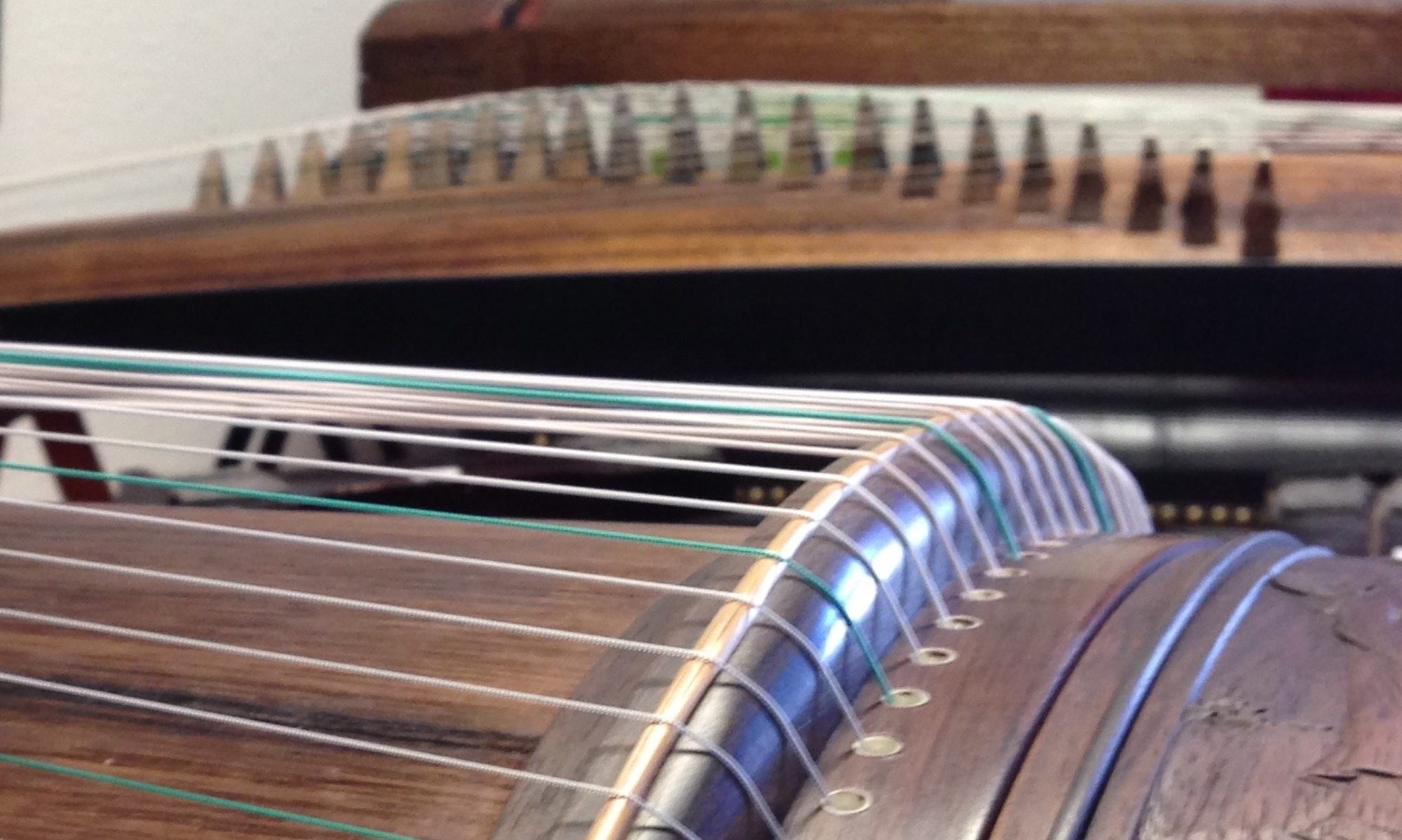There are 2 ways to tune a Guzheng. The first way involves adjusting the tension of the strings to produce the desired pitches. The second involves moving the bridges to fine tune the string.
Here are general steps for tuning a Guzheng:
Understand The Tuning of The Guzheng
The Guzheng has movable bridges, and each string is traditionally tuned to a specific note. The standard tuning for a 21-string Guzheng is the D major Pentatonic scale. The notes are D, E, F#, A, B. This pattern repeats in order over the entire instrument. There are alternate tunings to achieve different keys and scales but we will be using standard ‘D major’ tuning.

Get A Tuning Wrench
In order to tune the strings of a Guzheng you will need a tuning wrench. These wrenches are always included with you purchase or rent a Guzheng.
Identify The Strings
Each string on the Guzheng must be tuned to a specific pitch. The thickest string is ‘D’ , and it follows the pattern ‘D , E , F# , A , B, D, E, F# , etc’ To help the eye see the 5 string sets the ‘A’ string is usually a different color . Identify the strings, and the ‘A’ string pattern and after that you will know which string you are tuning to which pitch.

Tune The Guzheng From Low To High
Start tuning from the lowest-pitched string and move to the highest. Insert the tuning wrench and turn the tuning pegs clockwise to increase tension (raising the pitch) or counterclockwise to decrease tension (lowering the pitch). On the thinnest strings (highest pitched) be careful and turn the tuning wrench slowly to avoid breaking a string.



Use A Chromatic Tuner
There are smart phone apps that are tuners. Additionally you can buy a small digital chromatic tuner, which can be more accurate. You’ll need to get the tuner close to the instrument, you can put it on a music stand. Some tuners have little clips like the picture above – you can clip it to tuning box. As you tune the string, you’ll need to continuously pluck the string as you watch the tuner. All tuners have some kind of light or signal when you are right on a pitch.
Bend / Stretch The Strings, Check Tuning Again
Now that you have tuned all the strings, the next step is to gently bend the strings by pressing down on the string towards the floor. Afterwards the strings might go out of tune again, this is normal and you’ll have to go through all the strings again and tune them to pitch

Adjusting The Bridges
Occasionally you will need to fine-tune the pitch of individual strings by moving the bridges slightly. These bridges are movable and may need to be adjusted to refine the intonation. Lift the string up with your right hand and grab the bridge with your left hand thumb, index and middle finger to slide it to the left or right to fine tuning. Moving the bridge to the right increases the pitch, moving to the left lowers the pitch. Repeat As Needed
Due to the nature of the instrument you’ll have to go through the tuning process a few times if necessary.
Now that you know the basics of how to tune a Guzheng, remember that it may take some practice. Also it is important to be patient. If you’re unsure about tuning the instrument yourself, consider seeking help from a more experienced player or a professional instrument technician.

